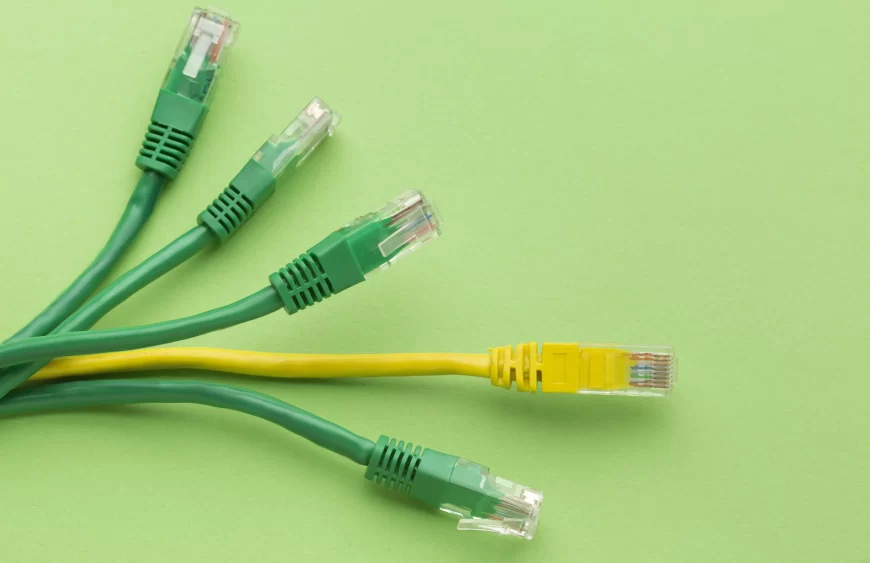Game streaming has evolved significantly, demanding top-tier equipment to ensure seamless performance. One cGame streaming has evolved significantly, demanding top-tier equipment to ensure seamless performance. One crucial element of any gaming setup is the HDMI cable, which directly impacts video quality, latency, and overall gaming experience. Among various options, the fiber optic HDMI cable has gained popularity. But is it the right choice for game streaming? Let’s break it down.
Understanding HDMI Cables for Gaming
HDMI (High-Definition Multimedia Interface) cables play a crucial role in delivering high-quality visuals and audio for gaming. Whether you’re a casual gamer or a professional streamer, the right HDMI cable can significantly impact your gaming experience by ensuring smooth frame rates, minimal input lag, and crisp visuals.
Traditional HDMI cables, often made of copper, are widely used for connecting gaming consoles, PCs, and monitors. They come in different versions, such as HDMI 1.4, HDMI 2.0, and HDMI 2.1, each offering varying levels of bandwidth and support for different resolutions and refresh rates. For instance, 4K HDMI cable with HDMI 2.0 support allows 4K resolution at 60Hz, while HDMI 2.1 cables push the limits to 4K at 120Hz and even 8K at 60Hz, making them ideal for high-performance gaming setups.
However, as gaming technology advances, gamers demand higher resolutions, faster refresh rates, and seamless data transmission. This is where fiber optic HDMI cables come into play. Unlike traditional copper HDMI cables, fiber optic cables use light signals to transmit data, offering greater bandwidth, longer transmission distances, and minimal signal degradation. This makes them a preferred choice for game streaming, where ultra-fast response times and flawless video quality are essential.
Choosing the right HDMI cable for gaming depends on several factors, including your gaming console, monitor or TV specifications, and whether you’re playing at 1080p, 4K, or beyond. If you’re into competitive gaming or game streaming, investing in a high-performance cable can make a noticeable difference in your overall experience.
Advantages of a Fiber Optic HDMI Cable for Game Streaming
1. Superior Signal Transmission
Unlike copper HDMI cables, fiber optic versions transmit data using light pulses, which eliminates interference and signal loss, even over long distances. This is especially important for gamers using 4K HDMI setups and need consistent performance without signal loss.
2. Higher Bandwidth for 4K and Beyond
Gaming is evolving rapidly, and 4K HDMI cable support has become standard. Some high-end setups even target 8K resolutions. Fiber optic HDMI cables support higher bandwidths, ensuring smoother performance for high-resolution gaming with minimal lag.
3. Reduced Latency
Latency is a major concern in game streaming. Copper HDMI cables can introduce slight delays, especially over long distances. Since fiber optic cables eliminate electromagnetic interference, they ensure real-time responsiveness, crucial for competitive gamers.
4. Long-Distance Transmission Without Quality Loss
If your gaming setup requires long cable runs, fiber optic HDMI cables shine. Traditional HDMI cables lose signal quality beyond 25 feet, while fiber optic HDMI cables maintain flawless transmission even at distances over 300 feet.
5. Future-Proofing Your Setup
With gaming technology constantly evolving, investing in a fiber optic HDMI cable ensures you’re ready for future upgrades. These cables support high refresh rates (120Hz and beyond) and new gaming technologies like HDR (High Dynamic Range), VRR (Variable Refresh Rate), and Dolby Vision.
Comparing Fiber Optic HDMI Cables to Traditional HDMI Cables
| Feature | Fiber Optic HDMI Cable | Traditional Copper HDMI Cable |
| Transmission Type | Optical (Light) | Electrical (Copper) |
| Signal Quality | No degradation over long distances | Signal degrades over long distances |
| Bandwidth | Supports 48Gbps (Ideal for 4K/8K gaming) | Limited to 18Gbps (May struggle with high frame rates) |
| Latency | Extremely low | Slightly higher over longer runs |
| Interference | Immune to EMI/RFI interference | Prone to electromagnetic interference |
| Maximum Length | Up to 300 feet | Up to 25 feet before quality loss |
| Price | Higher | More affordable |
When Should You Choose a Fiber Optic HDMI Cable?
1. If You Stream in 4K or 8K
For gamers who stream in ultra-high-definition, a 4K HDMI cable with fiber optics is the best option. It ensures no loss in resolution or frame rate.
2. If Your Gaming Setup Requires Long Cable Runs
If your PC or console is far from your TV or monitor, a fiber optic HDMI cable maintains signal integrity over extended distances.
3. If You Experience Interference Issues
Gamers dealing with signal disruptions due to other electronic devices will benefit from the interference-resistant nature of fiber optic cables.
4. If You Need the Best Performance with High Refresh Rates
Competitive gamers who play at 120Hz or 240Hz will find fiber optic HDMI cables deliver the smoothest experience.
Are There Any Drawbacks?
While fiber optic HDMI cables offer several benefits, they come with a few drawbacks:
- Higher Cost: They are more expensive than traditional HDMI cables.
- One-Way Signal Transmission: Unlike copper cables, fiber optic HDMI cables transmit signals in only one direction, meaning users must ensure proper installation.
- Fragility: Fiber optic cables are more delicate than copper cables, requiring careful handling.
Final Verdict: Is a Fiber Optic HDMI Cable Worth It for Game Streaming?
If you’re a casual gamer with a standard 1080p or 4K setup within a short range, a high-quality 4K HDMI cable with copper conductors may suffice. However, for serious gamers and streamers who demand zero latency, high refresh rates, and long-distance connectivity, a fiber optic HDMI cable is the ultimate choice.
Where to Get the Best HDMI Cables?
For gamers looking to upgrade their setup with fiber optic HDMI cables, explore the range of premium cables available at Tono Systems. With high-performance solutions designed for professional and casual gamers alike, you can experience seamless game streaming without compromise.


